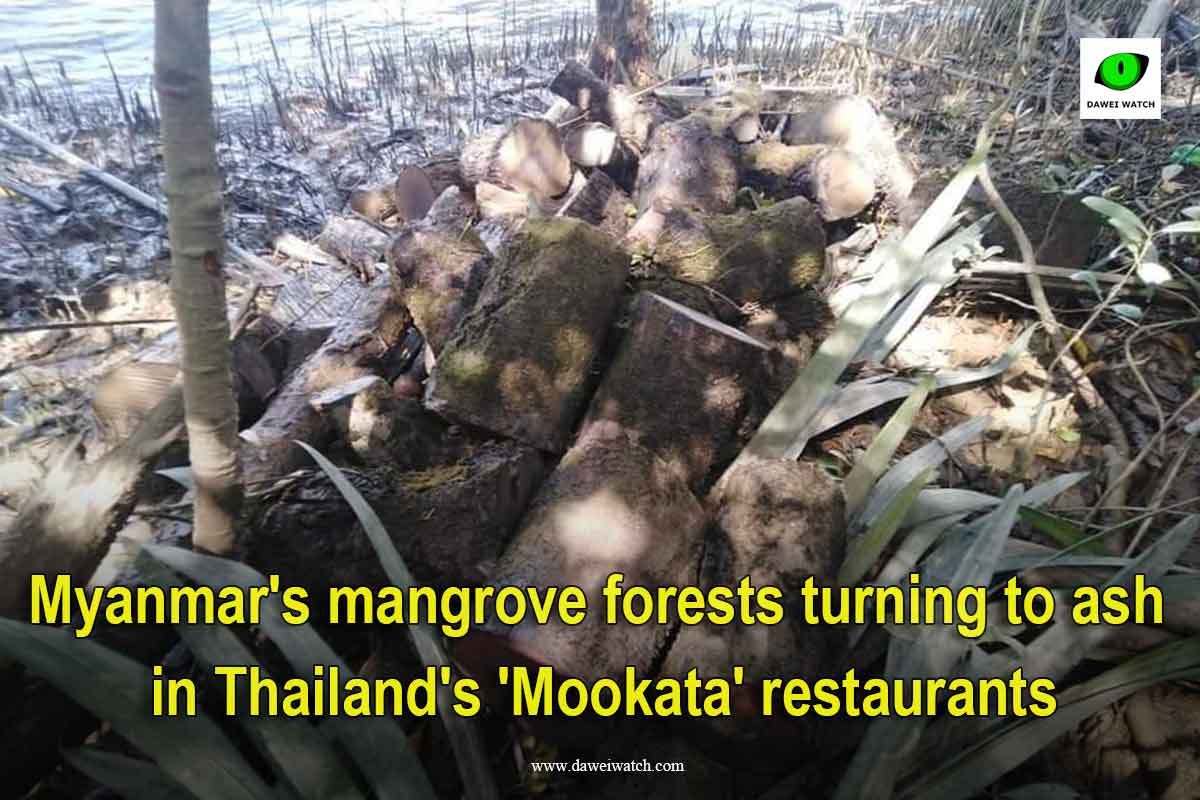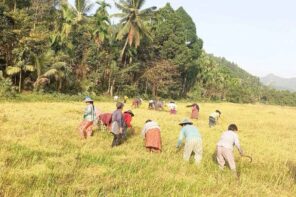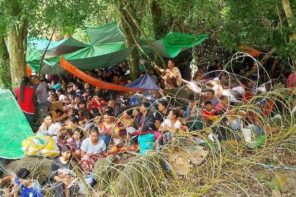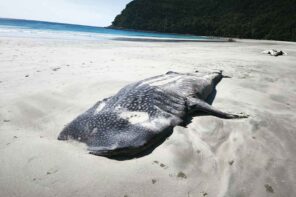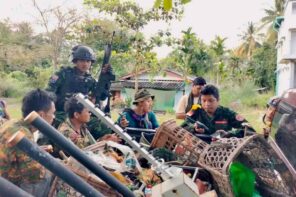“Mookata” restaurants, a common and bustling sight across Thailand, are beloved by locals and tourists alike.
However, it seems few diners are aware that their meal is playing a role in the depletion of Myanmar’s vital mangrove ecosystems.
The immense popularity of these restaurants directly correlates with the disappearance of these forests.
Mookata is an all-you-can-eat barbecue style of dining where customers grill meats and seafood on a domed griddle. A distinctive feature of the grill is a surrounding trough filled with broth, which catches the flavorful juices from the grilling meat, creating a delicious hot pot that diners can enjoy simultaneously, adding to its appeal.

The essential ingredient for the thousands of Mookata establishments is high-quality charcoal that produces minimal smoke and provides strong, consistent heat.
This specific type of long-lasting, high-heat charcoal is known as mangrove charcoal, or “Pyu” charcoal (in Burmese). The primary source for this charcoal, supplying thousands of Mookata restaurants in Thailand, is the Myeik (Mergui) Archipelago in southern Myanmar, a region that possesses hundreds of thousands of acres of mangrove forests.
Crossing the Pakchan River
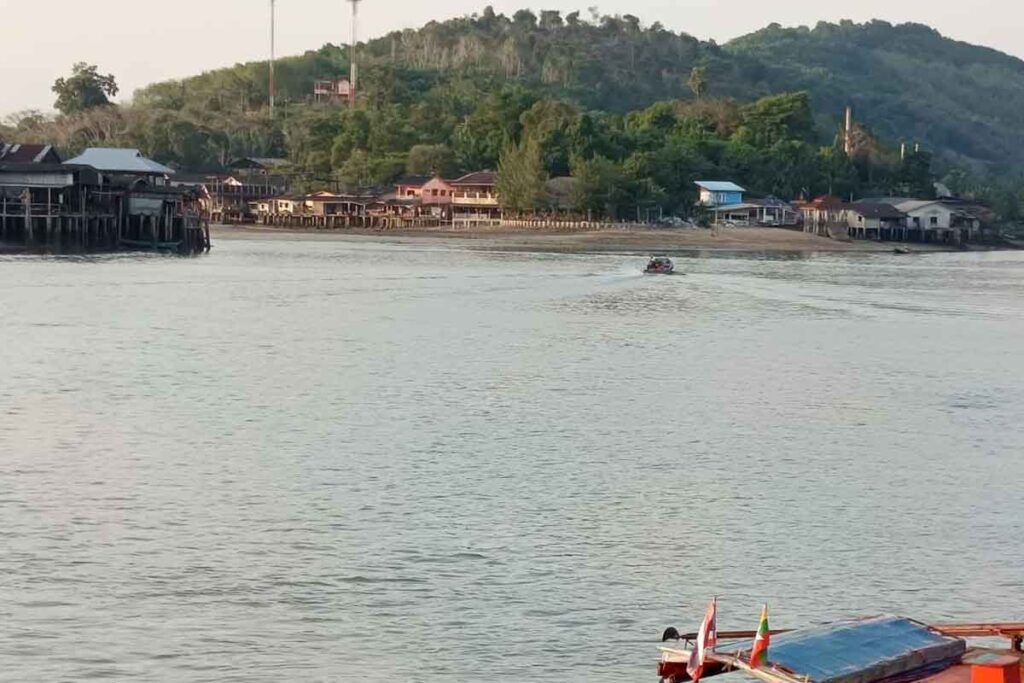
Under the cover of darkness, a grey, 18-foot-wide boat carrying exactly 2,600 bags of charcoal silently navigates the Pakchan River. This vessel, laden with 120,000 kilograms of mangrove charcoal, makes its monthly journey across the Thai-Myanmar border from the Kyunsu township area to Ranong, Thailand.
It is just one of dozens of such charcoal boats that regularly make this trip. These boats are the lifeline supplying the immense demand for charcoal from Thailand’s countless Mookata restaurants.
According to an investigation by Dawei Watch, there are at least 10 charcoal warehouses along the port in Ranong, with each warehouse accommodating about 10 charcoal boats. A local from Dawei, Ko Tun (not his real name), who has lived in Ranong for about 30 years, confirmed that these boats from the Myeik region dock at these warehouses to unload the mangrove charcoal, which is then distributed throughout Thailand.
“The bags are unloaded from the boats using cranes. The boats then load up on dry goods from Thailand to take back. Each warehouse services about ten of these big boats,” he explained.
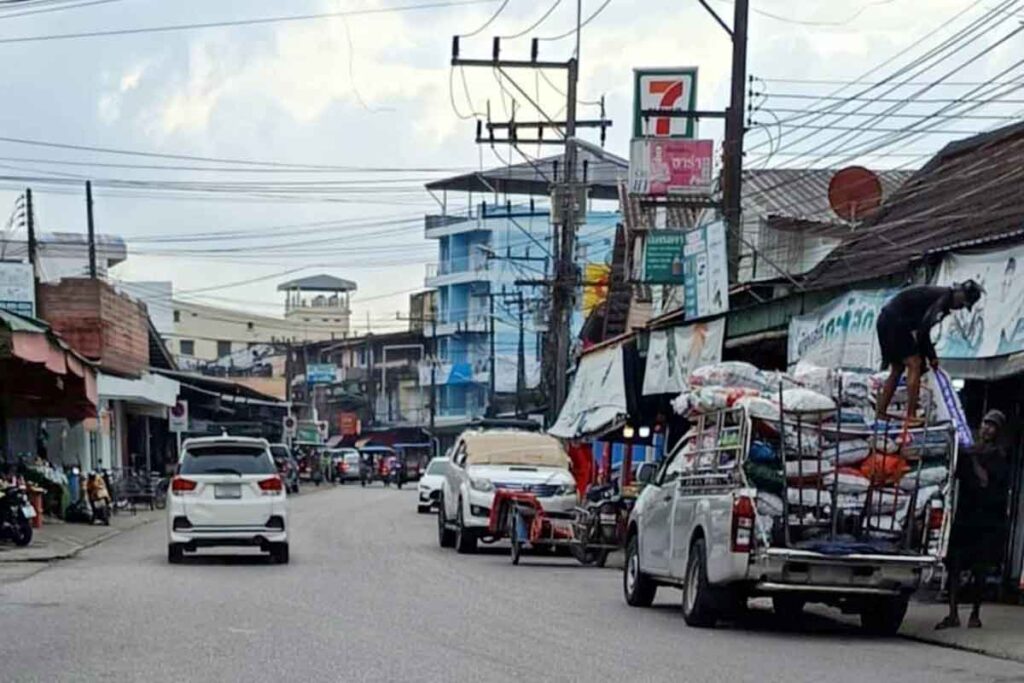
A single boat typically makes three round trips per month, transporting over 350,000 kilograms of charcoal in that time. The mangrove charcoal imported from Myanmar is distributed from Ranong to the rest of Thailand, according to Ko Tun.
Another source close to charcoal businesses in Ranong stated that boats from Myanmar must declare the docking warehouse and the quantity of charcoal to Thai authorities upon arrival.
The warehouses in Ranong buy the charcoal for 120 baht per 22-kilogram bag. Distributors from all over Thailand, including Bangkok, purchase the charcoal from these warehouses to sell to Mookata restaurants.
“They come from Bangkok with 10-wheel trucks to haul it away in massive quantities,” the source added.
Boat owners revealed that nearly all charcoal boats are painted a hazy grey color and that they have to pay bribes to both the Myanmar military council’s navy and the Thai navy and authorities. The exact amounts of these payments could not be determined.
Tracing the roots
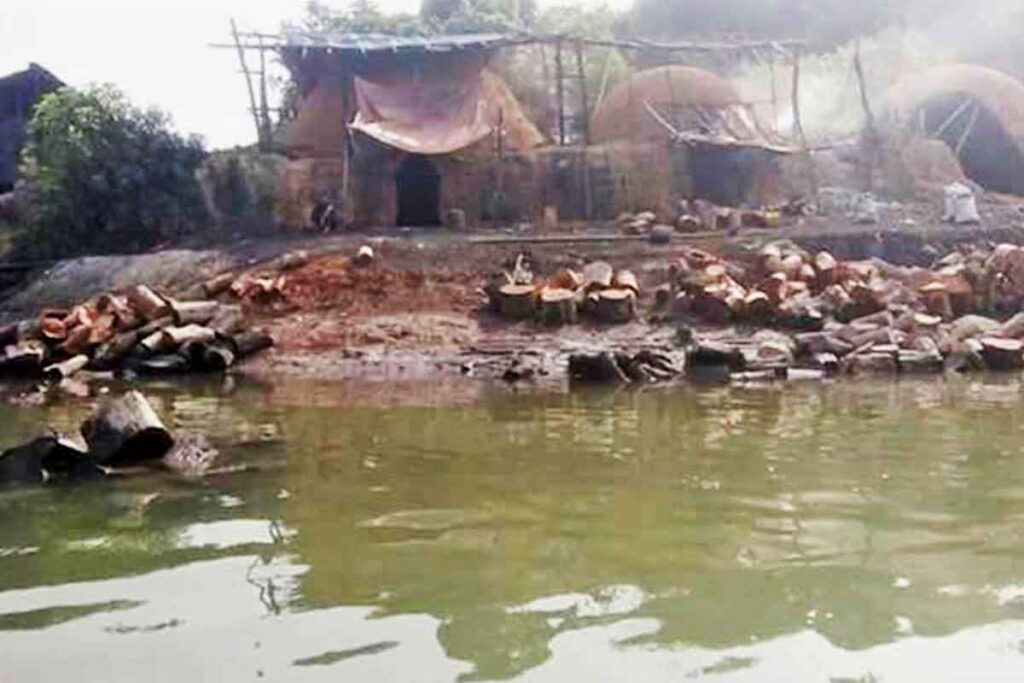
The Tanintharyi Region, with over 500 miles of coastline and more than 800 islands, is home to thousands of acres of mangrove forests. According to 2018 data from the website myanmar-ecosystems, the Tanintharyi Region has over 600,000 acres (617,763) of mangroves.
The majority of these forests are located in southern Tanintharyi, which constitute the Myeik Archipelago, the primary region for charcoal production.
U Ba Toke (not his real name), a man in his 50s from the Kaw Zar Yar village tract in Kyunsu Township, has been making a living by producing mangrove charcoal for over 25 years. He owns 10 charcoal pits of various sizes and produces over a thousand 25-viss (approximately 40 kg) bags of charcoal per month.
“I produce around a thousand bags of charcoal a month on average. It mainly goes to Siam (Thailand). Sometimes, if the price is right, I’ll send it to Myeik as well,” U Ba Toke said.
Due to the favorable exchange rate, the Thai market is the main destination for mangrove charcoal from the Myeik region. A 25-viss bag of charcoal sells locally to traders for 19,000 kyat.
Similarly, U Moe (not his real name), also in his 50s and a native of Ma Noe Yone village in Bokpyin Township, has been producing charcoal for over a decade. With a family of 10, he produces charcoal on a small scale for living, not commercially with large pits.
However, since the military coup, large-scale producers have established numerous large pits, leading to a shortage of mangrove trees and creating difficulties even for small-scale producers like U Moe.
“The number of charcoal pits has about tripled. They all export to Thailand. The good price is the main reason the mangrove wood is becoming undersupply,” U Moe explained.
He noted that his village alone now has around 30 large pits, and the mangrove trees are becoming rarer.
“The shortage has gotten worse since the coup. It’s become lawless,” he added.
In U Moe’s village, high-quality mangrove charcoal destined for Thailand sells for about 600 kyat per kilogram. This same charcoal, upon arrival in Ranong, Thailand, sells for 13 baht (about 1,800 kyat) per kilogram.
What’s driving the rise?
While some locals in the Myeik Archipelago have traditionally produced charcoal, the numbers were never this high, according to residents.
Ko Ba Oo (not his real name) from Kan Maw Gyi village in Bokpyin Township states that the current high price for charcoal, driven by the baht exchange rate, combined with the military council’s oppression of offshore fishing operations, has pushed more people into charcoal production.
Fishermen who go to sea face strict inspections and interrogations from the military navy, and risk being tortured. As a result, many have switched to charcoal production, which does not require interaction with the military.
“When you’re making charcoal, you don’t have to go anywhere. You’re in your own garden. It’s not as free to go out to sea as it used to be. That’s why there are more charcoal makers now,” Ko Ba Oo said.
He added that the high overhead costs of fishing, such as fuel and food, also make charcoal production a more attractive option.
Tracking the loss
A review of Google Earth satellite imagery of three mangrove areas in the Myeik Archipelago reveals a significant thinning of mangrove trees. A comparison of images from early 2021 (before the coup) and 2024 shows a clear decrease in mangrove cover.
The areas examined as samples were the western part of Kanmawkyun and the Bandane village tract in Kyunsu Township, and the area around Hankachin village in Bokpyin Township. These areas, once lush and green with mangrove trees before the coup, now have only sparse, scattered trees.
The escalation of charcoal pits in Bokpyin, Kyunsu, Myeik, and other coastal mangrove regions is driving this destruction. Three charcoal producers interviewed by Dawei Watch confirmed that the increase in producers has led to a shortage of mangrove trees, with some areas becoming completely deforested.
Ko Ba Oo from Kan Maw Gyi village said that before the NLD government, there were still mangrove trees with a perimeter the size of a person’s embrace, but now only wrist-sized trees remain.
“There are no mangrove trees left… Even before the coup, the big trees were gone. You couldn’t find one with the perimeter of a person’s embrace. At most, they were thigh-sized. Now, only wrist-sized ones are left because there are so many cutters,” he said.
Charcoal from his village and others is sold to local depots and then transported by boat from Hankachin village to Ranong, Thailand.
Conservation setbacks
U Po Ein, a Myeik resident and environmental activist, stated that the number of people cutting mangroves for charcoal has increased excessively in the lawless environment following the coup.
He is the head of Natural Resources and Environmental Affairs for the 88 Generation Peace and Open Society and the Founder & Executive Director of the Green Network Mergui Archipelago.
“After the coup, law and order vanished. Fewer jobs were available. And then, through deals with departments and lapdog of the regime, charcoal production and logging have increased,” U Po Ein said.
Before the coup, there were conservation measures in place, with mangroves designated as community forests and protected public forests, which provided a degree of regulation.
For example, the 3,340-acre Ma-aing Island mangrove forest in Kyunsu Township and the 717-acre West Kyaukka Island in Palaw Township were designated as protected public forests. Within these protected areas, cutting trees and fishing were prohibited, with violators facing up to one year in prison under Section 40 of the Forestry Law.
However, in the aftermath of the coup, these designations exist only on paper.
Following the military coup, many environmental activists have gone into hiding to avoid persecution. In their absence, mangrove deforestation has escalated, resulting in severe depletion of mangrove cover over the past four years.
Impacts on land and livelihoods
The depletion of mangrove trees is now so severe that U Ba Toke, the owner of 10 charcoal pits, says he has to hire workers to find and cut trees and even goes to cut them himself.
“How can the mangrove forests withstand this? One person cuts here, another cuts there, and after a while, they’ll all be gone,” he sighed.
This deforestation disrupts the natural ecosystem and leads to a loss of marine resources that depend on the mangroves for survival, explained U Po Ein.
“The livelihoods of those who depend on the mangroves could also be threatened in the future due to the ecosystem’s collapse. This is part of the resource curse,” he said.
Ko Ba Oo from Kan Maw Gyi village echoed this, stating that the depletion of mangrove trees has led to a decline in marine life such as fish, crabs, shellfish, and eels that locals traditionally gathered from the forests.
Mangrove forests are crucial nurseries for many marine species, which are born there and migrate to the open sea as they mature.
“If you went into the creeks before, you could find whatever you needed to eat like mussels, eels, shellfish. Now, they’re gone,” said Ko Ba Oo.
Amid the conflict and instability in Myanmar, the supply of charcoal to thousands of Mookata restaurants in Thailand continues uninterrupted and without concern.
U Po Ein suggests that revolutionary forces should take on the role of educating local communities about the rapid depletion of mangrove forests during this period. He emphasized the need for awareness programs to prevent the over-exploitation of mangrove resources and to promote sustainable use.
“Rather than a future where the revolution ends but natural resources are depleted and the ecosystem is destroyed, it’s crucial to act with awareness and begin educational efforts now,” U Po Ein urged.

